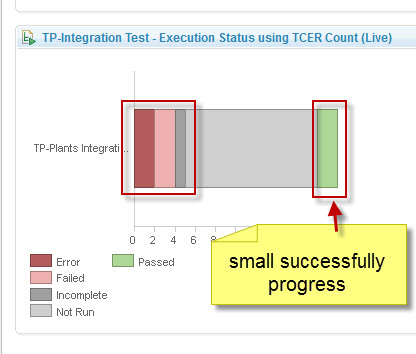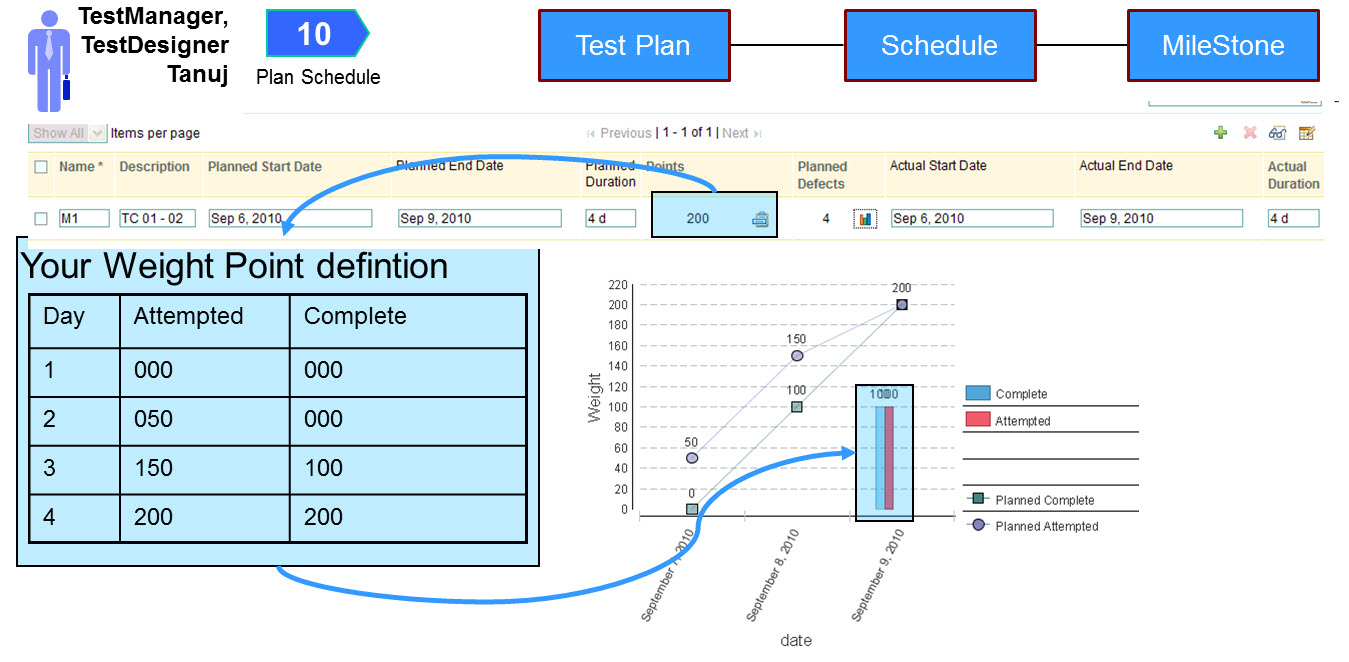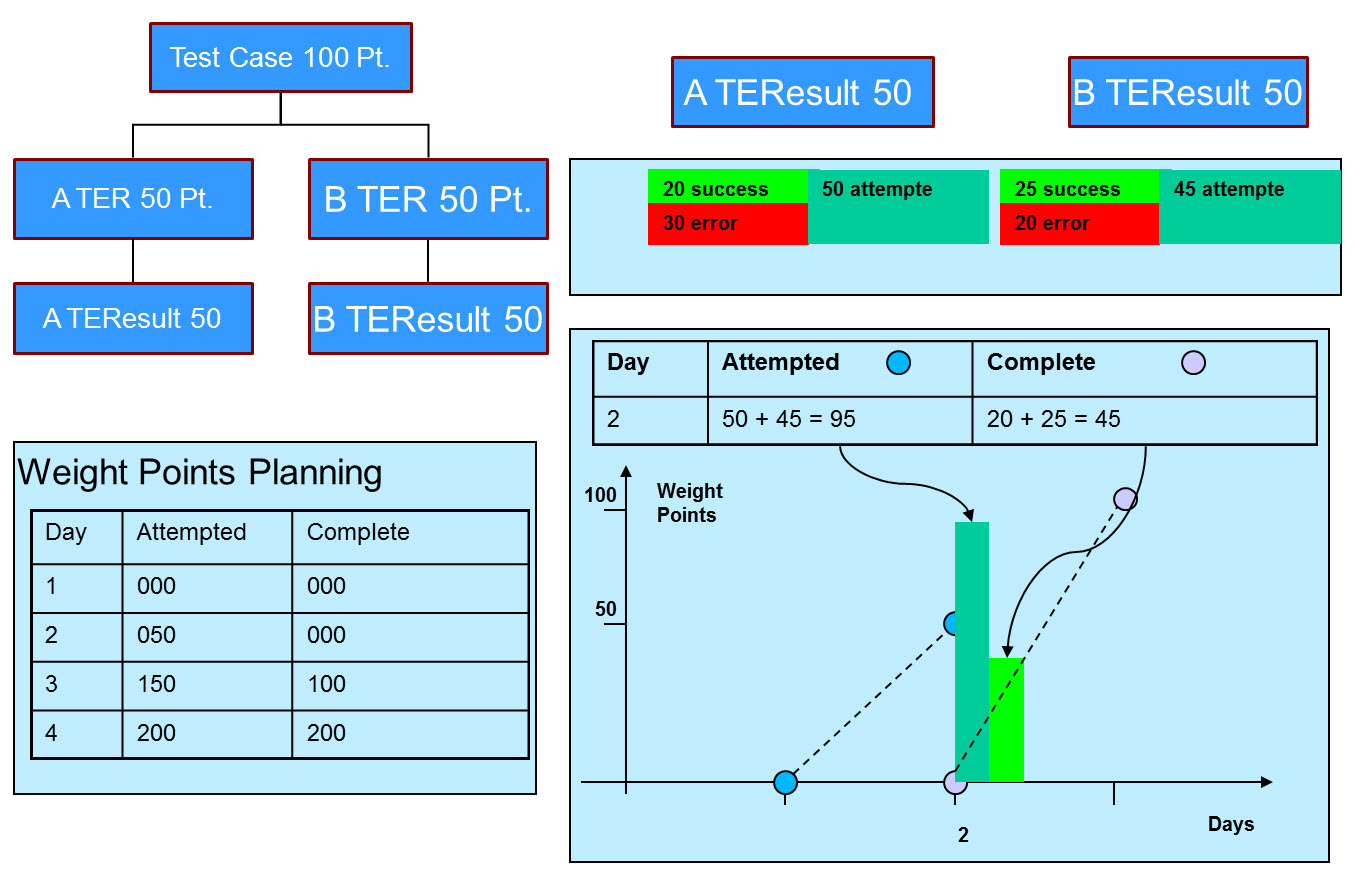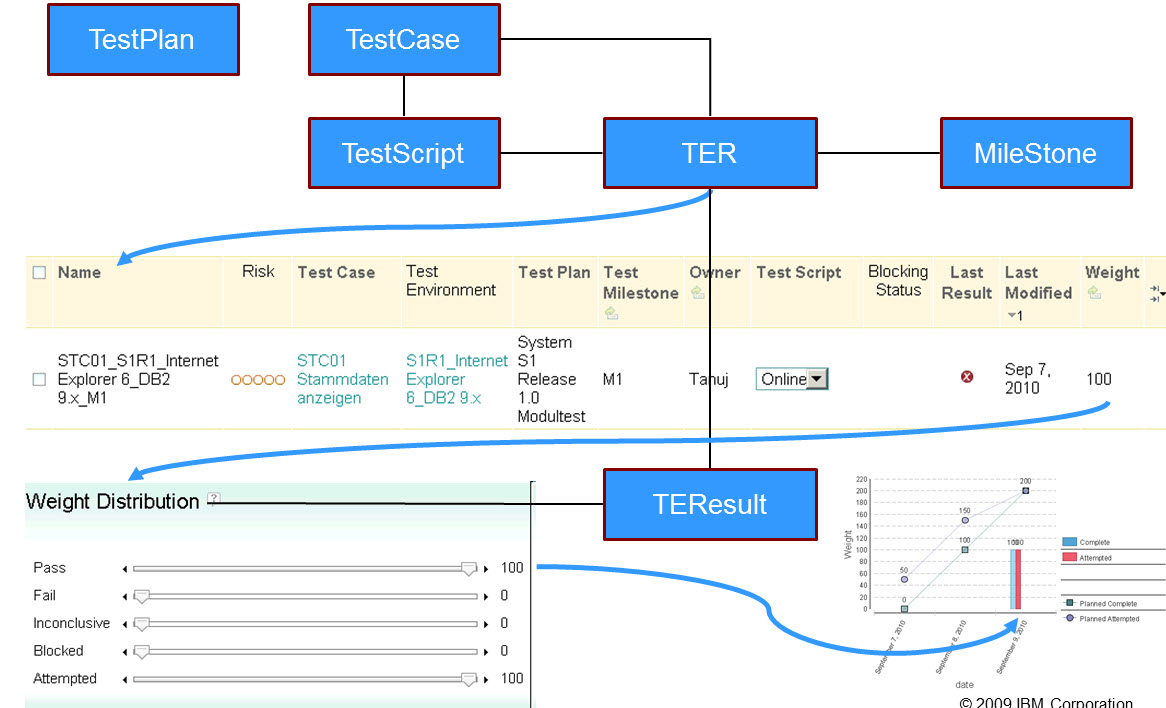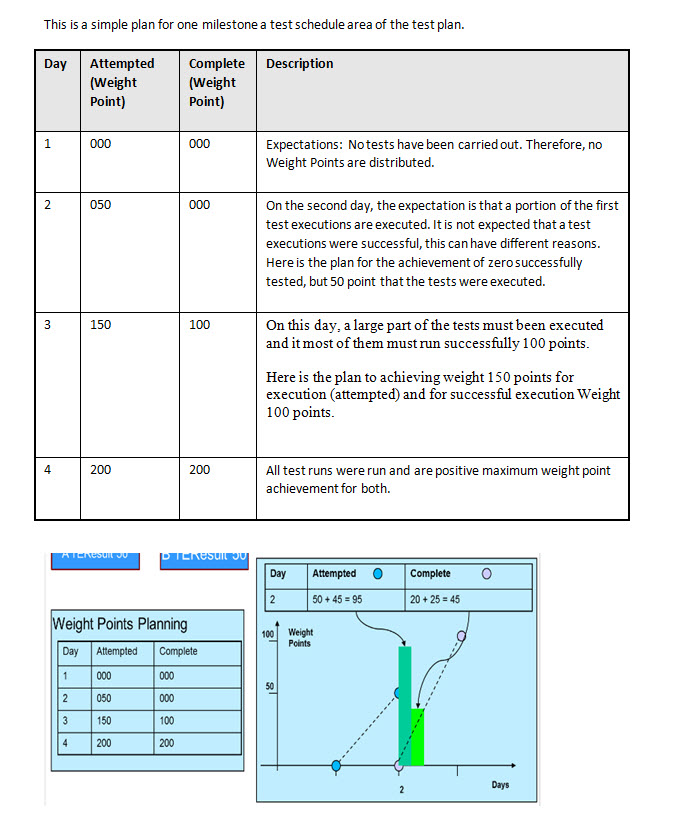Why using Points in test schedule/report?
|
Points are used in lots of TER reporting, why not just count by TER? What's the value of points and how shall we use it? It just confuses me. Thanks Jirong |
3 answers
|
Thanks for your reply.
I can understand the weights of the test cases, but still don't know how to use points. e.g. in the test plan/test schedule table/Execution Progress Planning/Plan Details, how to assign points to Points attempted, Points Completed, etc. Thanks again, Jirong |
|
Hello Jirong Hu, I know this is a old question, but maybe this is still a actual topic or can can provide more actual content for that topic.
Overview
Your Team Weight Point definition
Sample for combined own team usage definition for the weight points:
a) Definition and Planning for a single Test Case
How does one come on the number of 100 for test Cases and on one entirely plan estimation, for completely implemented tests and successfully executed tests?
e.g. Will the following acceptance made, for a case of test case assign we 100 points, these points to become at the end of a test execution distributed.
This means for our team:
– The case of test lasts from planning, production up to the successful conclusion approx. 2 days
– The case of test does not have or only small risks.
– The Test Steps count at the inside a test script does consist not of more than 10 to 20 test steps
– During the test execution takes place no large data inputs
– Importance of the test related to the functional requirements is middle .
Now we can distribute these 100 points on our entire test remarks. This tremble-interprets that we, if we e.g. 3 sets of remark TER at a case of test have, distribute we the points 33, 33 and 34 for the test execution records. These are distributed at the end of a test.
b) Planning the weight points to be reached for the whole Test Plan based a single milestone iterations
Following Assumption:
Comments 1
It's vary useful answer for weight point of test case. It helps much for understand the weight points.
Is the weight points the same as the Points in test schedule, so the test schedule Points is the abbreviation of weight points?
If yes, my more question is if I don't add or create test cases for the test plan, how can I estimate the Points for test schedule iteration? According to the expert experience?
Hello Jia Jia,
|
|
Hi Jirong,
Not all tests are created equal. Weight is often used to determine the complexity or duration of a test. Some even use it to weigh relative importance of one test vs. another but I'd say duration/effort is the more common use. Reference: http://publib.boulder.ibm.com/infocenter/rqmhelp/v2r0/topic/com.ibm.rational.test.qm.doc/topics/t_size_testeffort_all.html http://publib.boulder.ibm.com/infocenter/rqmhelp/v2r0/topic/com.ibm.rational.test.qm.doc/topics/t_add_weight.html |
Your answer
Dashboards and work items are no longer publicly available, so some links may be invalid. We now provide similar information through other means. Learn more here.

